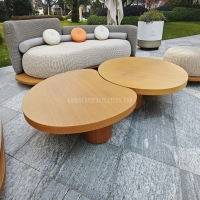Welcome to the website for landscape facilities products and knowledge.
How does the table’s design account for the prevention of damage from impact or dropping objects?
Contemporary table design has evolved significantly to address the challenges of impact resistance and dropped object protection. Manufacturers employ multiple strategic approaches to create surfaces that maintain their integrity under demanding conditions. The foundation begins with material selection—high-pressure laminates, reinforced composites, and commercial-grade veneers provide inherent durability that surpasses conventional materials.
Structural engineering plays a crucial role in impact prevention. Many tables feature reinforced edges with impact-absorbing materials that create a protective barrier around the perimeter, the area most vulnerable to damage. These edges often incorporate flexible polymers or rubberized components that dissipate force rather than transferring it to the core structure. The table's underlying support system—whether legs, pedestals, or panel bases—is engineered to stabilize the surface against sudden shocks, preventing the amplification of impact forces.
Surface treatments further enhance damage resistance. Advanced coating technologies create microscopic protective layers that resist scratching, denting, and cracking. Some manufacturers incorporate energy-absorbing underlayers beneath the visible surface that function similarly to shock absorbers, compressing slightly upon impact to cushion blows. The integration of rounded corners rather than sharp edges reduces the risk of chipping while simultaneously improving safety.
For environments with frequent heavy object handling, specialized tables feature additional protective elements. Removable protective bumpers, replaceable edge guards, and sacrificial layers that can be periodically refreshed extend the table's functional lifespan. The strategic use of textured surfaces helps prevent objects from sliding off accidentally while distributing impact forces across a broader area.
Testing methodologies validate these design choices through rigorous drop tests, impact simulations, and durability assessments. Manufacturers subject prototypes to repeated stress scenarios mimicking real-world accidents—from tool drops to accidental collisions—ensuring the final product delivers reliable performance. This comprehensive approach to damage prevention through material science, structural innovation, and protective detailing results in tables capable of withstanding the demands of busy workspaces, educational facilities, and commercial environments where durability directly impacts operational efficiency and cost management.
Related search:

Recommendation
Elliptical metal outdoor table with nested design, resembling wood grain, round table